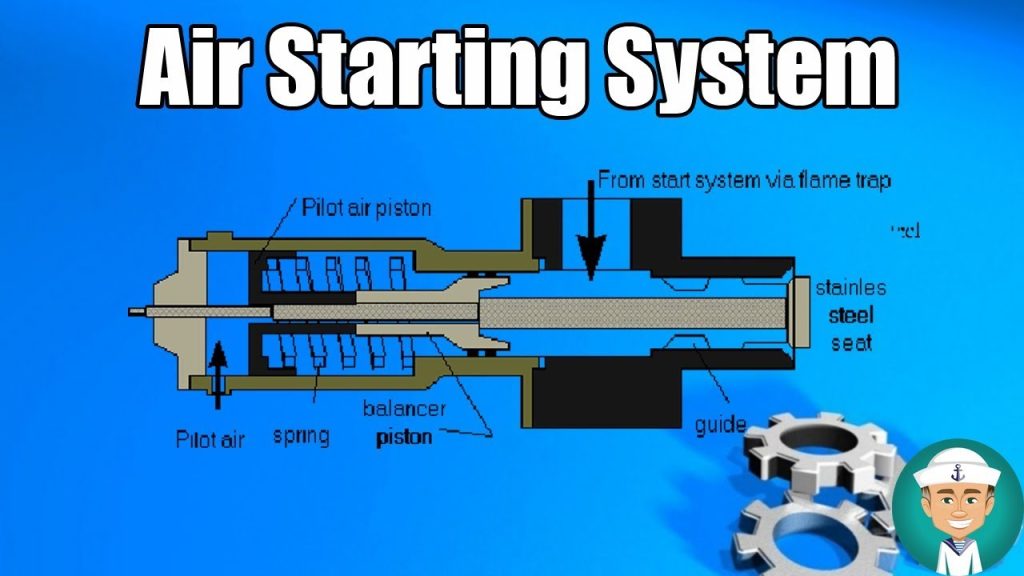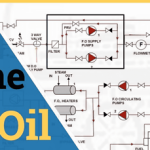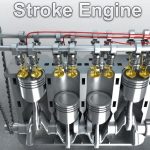
Purpose of Air Start System:
· A high pressured compressed air will start cranking the flywheel for a kick start on the crankshaft rotary motion process.
· The energy produced from rotary motion of the crankshaft is then diverted to the reciprocating motion of the pistons.
Operational System:
· When starting the engine, compressed air enters into cylinder with the piston just over TDC pushing the piston downwards.
· As the crankshaft starts rotation, the air start valve on the next cylinder in line opens to continue the momentum.
· The starting air system is linked with the fuel system; hence fuel supply is restricted on starting to keep within a speed limit that has been set before operating at full speed.
· Fuel is injected into the cylinders and the air is cut off when engine runs.
Lubricating Oil System

Purpose of Lubricating Oil:
1) Maintain oil film between piston rings and cylinder wall
2) Provide proper lubrication of camshaft valve gear
3) Provide oil film between shafts and bearing surfaces at main, crank pin wrist pin thrust bearings and all other bearing.
Types of Lubrication:
1) Splash
2) Pressure circulation
3) Forced feed
Difference in Lubrication:
· In 4-stroke engines, cylinder walls are lubricated by lub oil flowing into crankpin bearing through hole in connecting rod.
· In 2-stroke engines, cylinder walls are lubricated separately by forcing lub oil between piston rings and liner (by cylinder lubricators). These lubricators are single-acting reciprocating high pressure pumps which pumps lub oil at each stroke, on the liner surface.
Lubrication System:
· Lub oil is stored in the sump (for 4-stroke) or drain tank (for 2-stroke).
· The oil from drain tank is drawn by a lub oil pump through a suction strainer (prevents pump from being damage by foreign particles).
· Discharged oil is passed on to a cooler where heat exchange takes place between lub oil and seawater (bring down temperature of oil to a suitable level for lubrication process).
· Oil discharged from coolers flows into a manifold, which distributes oil to engine bearings/gearing (for lubrication), and to piston (oil cooled type).
· After which, it runs into crankcase and a strainer before settling in the drain tank.
· Centrifuge is used to purify lub oil system so that clean oil can be supplied.
Methods of Oil Treatment:
A. Settling:
Oil from the engine is placed in a tank and is heated up.Foreign matter such as carbon, sludge and water will settle to bottom of tank, and leave only clean oil above (based on the principle that density of oil is lesser than water). Hence, to separate clean oil, the contaminants can be drained out from the bottom.
B. Centrifuging:
A “centrifuge” rotates the oil at high speed, creating a centrifugal force.
This lashes the heavy contaminants outward towards the circumference of the bowl where they are removed.
C. Filtering:
Oil passes through materials (glass fibre, yarn, cotton, etc.) and foreign particles are absorbed.
Maintenance of LO System:
1) Pressure and temperature should be kept normal.
2) Oil must be purified regularly and changed when deteriorated.
3) Filters must be cleaned regularly.
4) LO must be analysed regularly and treated accordingly.
5) Engines and accessories should be maintained in good order (reduce contamination.


